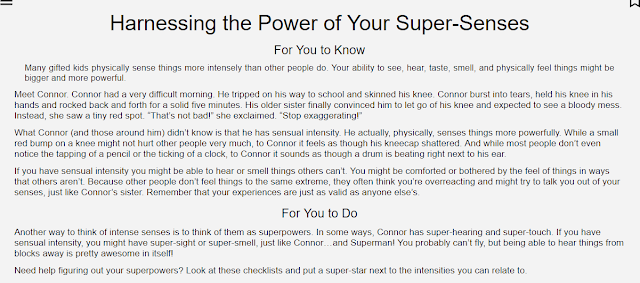High Sensitivity
One of the five overexcitabilities recognized by Dabrowski in the mid-20th century was “sensual overexcitability” related to the five senses. Further research took off in the 1990s around this topic with the work of Dr. Elaine Aaron. Her theory discovered “high-sensitivity” as a trait common in about 15%-20% of humans as well as many animals. High-sensitivity is disproportionately present in individuals who are gifted. It also has a correlation with introversion (70% of individuals who are highly sensitive are also introverted while 30% are extroverted).
This week we discussed the topic of “super-sensing” and took some corresponding surveys related to super-hearing, super-sight, super-smell, super-touch, and super-taste. We also discussed the pros and cons of this trait.In order to continue the reflection, students can complete these optional activities:
List several ways high sensitivity makes life better.
List several ways high sensitivity makes life harder.
Which list was easier for you to make? Why?
We are all responsible for comforting ourselves as we get older. What are some behaviors or objects that bring you comfort and help you navigate high sensitivity? Consider each of the five senses. Make a graphic organizer of five ways you can use each of these senses to comfort yourself (five favorite tastes, five favorite paintings/sights, etc.)
Images below come from "The Gifted Kids Workbook." Please feel free to complete the survey with a parent or caregiver.
Additional adult survey: https://hsperson.com/pdf/HSPSCALE_2007_research.pdf



Comments
Post a Comment